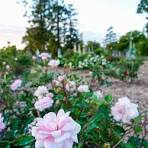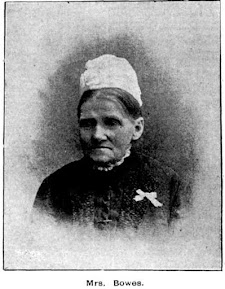The Necropolis - a virtual bouquet of roses!
For the final
"Tween" blog before I launch properly into blogs for 2024 regarding those who
lie peacefully in Rookwood, I want to dwell on the plants and flowers and in particular
the magnificent hardy roses that are so prevalent throughout the Necropolis.
HOMAGE TO THE HARDY ROSES OF ROOKWOOD
Charles Moore was the
designer and person responsible for the layout of the
‘Victorian Garden Cemetery’. He designed avenues and included roundabouts for
traffic to move swiftly throughout the initial part of the Necropolis.
Moore's designs included the use of many traditional funerary utilised plants such as pine
trees both at a low height or those that soared high and Indian hawthorn bushes.
He also planted many fast-growing Australian native pines that would be used as
markers for the cemetery from a distance. I won't go into any detail about
Moore – that’s for a later date - but I want to reflect on the roses he planted
and those that came later with the expansion of the Cemetery. I also want to
make reference to the curious unidentified species that would come to be identified with the name of the plot they were found to be growing within.
To the ancient Romans, the
rose was a symbol of pride and triumph, the flower of Venus, the goddess of
love.
They say that before the
rose became one of the flowers of the earth that it grew in Paradise without
thorns. Only after the fall of man did the rose take on thorns to remind man of
his sins but its fragrance and beauty continued to remind him of Paradise.
The Christians believe that
the red rose symbolises martyrdom and the white rose, purity.
The European and
Mediterranean group and the oriental tea roses of China developed separately.
The European group with only one exception, bloomed but once every twelve months. The oriental
version bloomed continually throughout the year. In the late 1700's and early
1800's Chinese roses were introduced to Europe bringing new colours. The
breeding developed a new class of rose, the hybrid tea roses whose perfume
reminded many of the scent of tea, and it wasn't long before a virtual rainbow
of highly scented, repeatedly blooming roses were created. The hybrid-tea rose
became the most widely grown type.
With the recent film about
Napolean and his relationship with Josephine I was reminded of her personal
contribution to the roses that we know today.
In her home, Malmaison,
north of Paris, she created a huge garden including what is believed to be the
world's first rose gardens. She collected roses from the various corners of
Europe and inspired French breeders to introduce many new varieties of China
roses. After Josephine died in 1814, ironically of a chill caught while walking
amongst her beloved gardens, her work and vision continued at Malmaison, and it eventually contained over 250 varieties. It is a tribute to her that rose
gardens today generally follow the style of layout that she had created.
At Rookwood, the largest
single repository of heritage roses in Australia, many roses have survived
harsh conditions and developed their own varieties. The Heritage Rose Society
who tends to the large garden at the Village Green near the Rookwood General Cemetery
office once a month, have identified many. Those that were not found in
catalogues were named after the person whose grave they were found growing within.
One of the first
unidentified variety to be named was the "Agnes Smith" a pale pink hybrid
tea rose after Agnes who had died in 1893 and buried in the Presbyterian
section. Another unidentified rose was named the “Mrs. Dudley Cross”, a pale-yellow tea rose found on Mrs. Cross’s grave
who had died in 1907.
They are accompanied by many
older established and identified rose varieties such as Duchess du Brabant 1857
and Crepuscule Noisette 1904.
Besides the large rose
garden at the Village Green, there is another large collection of roses in the sunken
garden at the Rookwood Crematorium where the aroma of over 10,000
rose bushes in bloom, is intoxicating.
Other smaller gardens are to
be found in the old Wesleyan area; the "BB" rose garden named as such as it
is within the BB section of the old Anglican area; the All-Saints Chapel rose
garden as well as small gardens in various cremation areas throughout the
Cemetery. In the Catholic portion is the Mary Mackillop Rose Garden and many
other areas such as the many lawn cemeteries containing rose gardens. Of course, many, many more roses are
to be found on individual graves.
If you are a rose lover, a
visit to Rookwood should be on your list! Although many varieties bloom year-round, Spring is the optimum time to visit.
I have trawled Google for
information on heritage roses and information from the various denominational
entities in Rookwood for relevant facts. I also have utilised information from the Friends of Rookwood with thanks.
I am no expert on roses (or
any flowers to be truthful!) and if you have any comments about roses in
Rookwood, please add them below or at the group Facebook page found under
rookwoodcemeterydiscoveries
or simply send me a personal
message at
lorainepunch@gmail.com
Until next week when we
visit a mausoleum!!











Comments
Post a Comment